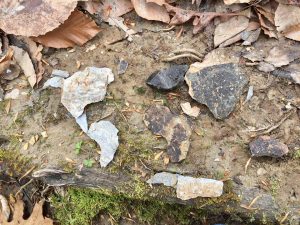Hearing from classmates last night that they struggle with lesson plans in similar ways was encouraging in a weird way: I’m not the only one who spends 20-30 hours of work on a single lesson plan! (Yay?) But I’m still curious how some manage to get it done (well) in a fraction of that time, and I look forward to hearing from others about how they approached the Washington lesson. Regardless of my lesson-planning insecurities, however, I want to make sure you both know I trust you in this process, and I am ok struggling through the messiness. And, I really appreciate both of your willingness to be responsive to our needs.
I’ve been thinking about “classic” literature. I wonder about the value of reading WITH kids through this literature, intentionally, to help them notice the problems, so they can begin to discern for themselves. We have read to our girls every night of their lives, and still do. Many of the books we have read would not be appropriate in the classroom for the reasons we discussed in class — stereotypical portrayals, singular/white-centric perspective, bias, non-representative — not intentionally, but because they were “the classics.” Our parents gave them as gifts with great sentimentality of their own love for the book; Josh and I remembered what we read and loved as kids…and were often surprised by what we didn’t remember was in them. With the girls, we sometimes skipped or paraphrased offensive parts, other times we’d pause and discuss what the author had written and what the problem was. I’m sure most of that went right over their heads, but it made us feel better, and hopefully, some sunk in.
But, would they be better served by abandoning these books altogether in favor of more representative, honest, appropriate books? It makes me kind of sad to think about letting go of some…but it is easier if I think about WHO said they were classics in the first place, and if I have good stories with which to replace them (thank you for the book lists!). I am reading Piecing Me Together (Renee Watson) now with my almost 12-year-old. Jade, the teenage protagonist, describes the daily microaggressions she endures from all angles, as she attempts to understand her identity beyond the limited view of what most people see: a black girl from the ‘hood. This is a pretty direct look at how constant, pervasive and powerful the system of prejudice and racism is. Kaitlin is an empath. I see her squirm when Jade is disrespected, or patronized, or heckled, or dismissed. It is obviously making an impact. I don’t have to wonder if it’s sinking in.
I think this was your point in your FB post about scaffolding social justice themes with classic literature…makes even more sense to me now.
https://www.edutopia.org/article/social-justice-framing-classics?fbclid=IwAR2NoVRbjJaNUmJOGJXVg-SmyhmVP1rrJZ1FV8TOi3aKnvg9m2ByA8H9gjU
 I love maps. (My girls and I made this one a couple years ago after Kaitlin noticed the Africa-shaped piece on the bank of the creek behind our house.) So, I knew working with the John Smith map was going to be fun for me. But beyond that, it was another great example of how slowing down, helping students focus in and look closely (as the teacher in the video series did), and letting go of the control of the content a bit — facilitating vs. directing — can really help build interest at the outset. This interest, and the questions that linger after that initial discussion, will help students seek, draw out and assimilate so much more than if the unit were introduced through a typical didactic lecture. In marketing, we talked about this as a pull (vs. a push) strategy. Pharmaceutical companies use this a lot: they create some kind of urgency or interest among the general public, who then pull the product through the supply chain (their doctors) by asking about it or for it by name. This strategy works better (for the pharma co) than trying to get docs to “push” their products out to only the specific patients who need it. Slimy, I know. Clearly, the education application of this strategy is WAY more appealing to think about and use. 🙂
I love maps. (My girls and I made this one a couple years ago after Kaitlin noticed the Africa-shaped piece on the bank of the creek behind our house.) So, I knew working with the John Smith map was going to be fun for me. But beyond that, it was another great example of how slowing down, helping students focus in and look closely (as the teacher in the video series did), and letting go of the control of the content a bit — facilitating vs. directing — can really help build interest at the outset. This interest, and the questions that linger after that initial discussion, will help students seek, draw out and assimilate so much more than if the unit were introduced through a typical didactic lecture. In marketing, we talked about this as a pull (vs. a push) strategy. Pharmaceutical companies use this a lot: they create some kind of urgency or interest among the general public, who then pull the product through the supply chain (their doctors) by asking about it or for it by name. This strategy works better (for the pharma co) than trying to get docs to “push” their products out to only the specific patients who need it. Slimy, I know. Clearly, the education application of this strategy is WAY more appealing to think about and use. 🙂